With the BSVI emission regulation 2019 will be a year of much activity for the Indian CV industry
2018 CY came to a close with a slight drop in altogether Commercial Vehicle (CV) sales. It was M & HCVs, which saw a significant drop in sales when compared to the other CV seg’s. Linked with the implementation of new axle norms, the drop-in sales is said to be a result of the extra capacity added almost overnight, & in a market environment where the demand is not that strong. Following strong CV sales in FY’16-17 & FY’17-18, the drop in CV sales at the end of the 2018 CY also reflected on the rise in input costs, according to an industry expert. The rise in input costs could not be passed on by the fleet operators to their customers. If this would affect the growth of the CV industry in 2019, the rise in fuel prices, which rank at the top of the input costs of a fleet operator, & account for the biggest operational expenditure, proved to be a big dampener. Calculation showed that fuel costs have come to account for over 55% of the operating costs post the diesel price hike. Earlier they accounted for 50%. Terming the year 2019 to be a challenging year, attention to be drawn to the benefit of the new axle norms going to the consignor rather than the fleet operator because of the demand & supply situation. With most CV majors having passed on the rise in input costs to CV buyers in the form of a price hike, the quest for efficient CVs is going to increase in 2019. This, would be against a backdrop of rising stress at the transporters. With toll costs starting to eat into the operational costs, fleet operators in 2019 are expected to replace their aging trucks with newer, fuel efficient & reliable CVs. If this would include a move to higher tonnage, the possibility of overloading cannot be ruled out. With the talk of yet another imp’ regulation on safety coming in, it would serve to fully implement the Bus Code & Truck Code in 2019. 2 codes with a substantial safety imperative are being followed by OEs in flesh & spirit rather than the unorganized truck & bus bodybuilders. An OE player has to meet the norms when he makes a CV truck cabin or a bus body. The same norms may not apply if a cabin on a cowl chassis is made outside. Chances are that the application of AIS155 norms that are coming in force from April will be limited to OE players. There is also a need to ensure that safety regulations are effectively implemented.
With BS-IV emission regulation having the shortest lifespan of 3 years, the race to meet the BS-VI emission regulations in mid-2020 will intensity in 2019. It will be the trend of the year. Urbanization, infra’ development, connected mobility, & alternate fuel as well as hybrid tech’ would be the key trends for 2019. An amount of pre-buying was also expected in 2019. Of the opinion that pre-buying in 2019 would trigger high volume growth, CV makers will start introducing BSVI CVs from as early as Oct & Nov’19. Since a BSIV truck cannot be sold even if it were produced earlier (before the BSVI deadline), no CV major will be ready to take the risk of building stock with an impression that it will sell before the BSIV deadline. Since the size of the opportunity will be difficult to gauge, the only window available would be between Aug’19 & Dec’19. In the Jan-Mar’20 quarter, manufacturers are expected to produce CVs to order. Challenges in 2019 will bemanifold for certain. Vendors are likely to stop producing some of the components that are moving to BSVI by as early as Aug’19. CV majors are expected to stop producing some of the low selling variants by around the same time. Regular production of lead models would most likely stop in Dec’19. Heavy discounts on vehicles that are slow moving will be a key event in 2019. Many models will be phased out in Mar’20.
If some of the phased-out models could be earmarked for exports, the year 2019 is slated to be a challenging year for certain. A flurry of judicial interventions reinforcing the need to adhere to BS-VI regulations expected in 2019. CV industry could gain from the ongoing warehousing consolidation & mechanization. With trucks expected to work like aircraft, & spend less time at the loading & unloading bays in view of the asset quality & costs going up, the CV industry in 2019 is also set to gain from some changes in the GST structure that are likely. Not a year of down cycle, CV industry should do reasonably well in 2019. A reason for some worry, yet, is on the account of the macroeconomic parameters that are not as good as they were a few months ago. If the same trend continues in 2019, the effect of it on growth cannot be ruled out. With the market outlook not as positive as it was a couple of months back, the CV industry in 2019 could profit from some dip in operational costs on account of fuel prices staying low. This would be influenced by a subdued global economic atmosphere. A trend identified in 2018, & expected to continue in 2019 would be of bigger fleets taking advantage of GST for their ability to pay tax through forward charge mechanism. This would ensure them better profit margins, & reduce their need to contract smaller fleets. The markets are consolidating on higher tonnage. Trend has been evident for the last 5 years. As the movement towards consolidation of buying & shifting of loads increases as CV costs go up, the pressure on business expansion by smaller fleets would also go up.
If the smaller fleets are expected to find newer ways of staying relevant amid rising challenges in 2019, the year is also expected to a period of stricter implementation of overloading norms. Gaining from the sanction of large govt’ infra projects, tipper sales in 2019 are expected to exceed that of the haulage seg’. With the III & IV quarter of 2019 expected to witness high sales volumes. An amount of uncertainty will be there. With there being the risk of fiscal expansion at the cost of increased fiscal deficit, theyear 2019 is likely to be a year of much pre-buying as well. CVs makers are expected to reveal the price of the BS-VI CVs as they firm up on the tech’ strategies they will pursue. They are currently said to be experimenting with EGR, EGR & SCR combinations, & even EGR & EGR combinations to meet Euro-6 norms. With new axle norms adding almost 1 full year of sale in the industry in one day, & diesel prices not backed by an equivalent rise in freight rates, 2019 CY is expected to see a decent uptake in the first three months. Period between Jul’19 & Dec’19 will be a good period for the CV industry. TCO will be a critical challenge for fleets. Shift towards higher tonnage will continue in 2019 with an eye on profitable operating economics. A year of shift towards fully-built CVs, & of fresh investments by OEs to further arm as well as expand their network, an expansion of spares & service network is expected to rank high in line with rising dependence of operators on CV makers in 2019. If CV makers will invest in training mechanics to cater to the service needs of BSIV CVs in 2019, they are also expected to chalk out similar strategies for the period after BSVI norms come into force. To take advantage of the spares & service market growth for CVs, new players are expected to enter the fray in 2019. They could play the role of a franchise for CV majors, or look at investing in an independent network. Expected to be a year of few launches, 2019 will see CV manufacturers work on new models that they would introduce post the implementation of BS-VI. These would stress on a higher payload in the rigid as well as the tractor-trailer seg’s. In the rigid seg’s, manufacturers & their vendors are expected to spend an amount of their time & resources to re-engineer some of their existing as well as new models at the lighter & heavier end. This would be borne out of the packaging challenges posed by the need to move to BS-VI, & at the higher end, to accommodate the changes effected by the new axle norms. With the 37-tonne shifting to 41.5-tonnes with the new axle norms, CV majors are expected to look at the next level of 47.5 or 49-tonnes. With the 49-tonnes tractor-trailer combination going to 55-tonnes effectively with the new axle norms, a shift up is expected in that seg’ too. It is subject to the road conditions & the length of the vehicles, if not for the availability of load.
CV sales outline
Indian auto industry produced a total 21,945,408 vehicles in Apr-Nov’18 period, registering a growth of 12.53% as against 19,502,502 units sold in Apr-Nov’17. The industry produced 2,370,141 units in Nov’18, down (-) 0.84% as against the production of 2,390,266 units in Nov’17. In Apr-Nov’18, 749,351 CVs were produced, registering a growth of 41.70% as against the production of 528,818 CVs in Apr-Nov’17. In Nov’18, 81,851 CVs were produced, up 2.98% when compared to 79,482 CVs produced in Nov’17. In Apr-Nov’18, 647,278 CVs were sold, up 31.49% as compared to 492,269 CVs sold in Apr-Nov’17. In Nov’18, 72,812 CVs were sold, up 5.71%, as against the sale of 68,876 CVs in Nov’17. In Apr-Nov’18, 246,972 M & HCVs were sold, up 34.45%, as against the sale of 183,692 units in Apr-Nov’17. In Nov’18, 183,692 M & HCVs were sold, down (-) 10.97 as against the sale of 28,489 units in Nov’17. In Apr-Nov’18, 47,449 LCVs were sold, up 17.49%, as against the sale of 40,387 units in Apr-Nov’17. In Apr-Nov’18, 477,163 3 wheelers were sold, up 25.16%, as against the sale of 381,247 units in Apr-Nov’17.In Apr-Nov’18, the Indian auto industry exported 3,153,825 vehicles, up 20.78 as compared to the export of 2,611,206 units in Apr-Nov’17. In Apr-Nov’18, 68,340 CVs were exported, up 18.84% as compared to 57,507% in Apr-Nov’17. In Nov’18, 8,023 CVs were exported, down (-) 18.61%, as compared to the export of 9,857 CVs in Nov’17. In Apr-Nov’18, 33,284 M & HCVs were exported, up 24.11% as compared to 26,819 M & HCVs exported in April-Nov’17. In Nov’18, 4,244 M & HCVs were exported, down (-) 4.54% as compared to 4,446 units exported in Nov’17. In Apr-Nov’18, 35,056 LCVs were exported, up 14.23% as compared to 30,688 units exported in Apr-Nov’17. In Nov’18, 3,779 LCVs were exported, down (-) 30.16% as compared to 5,411 units exported in Nov’17. In Apr-Nov’18, 389,108 3-wheelers were exported, up 59.29% as against the export of 244,279 units in Apr-Nov’17.
CV sales in India at peak after 5 years
Growth in the CV industry in India has reached its highest sales peak after 5 years. The last such good sales were last reported in FY 2011-12. Altogether the CV sales in India registered a total domestic sale of over 8.56 lakh units last FY. CV industry in India has been gaining sales momentum over last 2-3 years & despite the shift to BS-IV was not all smooth, the industry managed to grow by almost 20% in FY 2017-18. Both LCVs & M&HCVs have posted growth by 25.42% & 12.48% resp’. Altogether the CV sales in India registered a total domestic sale of over 8.56 lakh units. Industry had sold 7.14 lakh units in FY’16-17. Growth in the CV industry has reached its highest sales peak after 5 years. The last such good sales were last reported in FY 2011-12 & ever since then; the sales of trucks & buses in India had not picked much. In the ongoing FY, the CoS has posted good growth, especially in the M & HCV seg’. CVs seg’ in India has registered a growth of 57.44% in Apr-May’18 period as compared to a lower base last year. M & HCV sales shot up by over 114% & LCVs grew by 34.27% in Apr-May’18 over the same period last year. This growth comes on the backdrop of a lower base which saw the implementation of BS-IV rules & GST implementation. The growth in the Indian truck industry is driven by rising incomes, urbanization, growth in the rural economy, e-commerce & GST has further simplified doing business in India. Indian CV manufacturers are further investing heavily to cater to the increasing demand of trucks & also prepared to roll out BS-VI compliant trucks by Apr’20. Trucks have been riding the growth in the M & HCV space. Sales of trucks with over 16.2 tonnes capacity saw a slight decline in sales but trucks in the range of 35 -40 T grew over 100% & saw a total sale of 27,936 units. Ashok Leyland remained the top-truck maker in this seg’ followed by Volvo-Eicher. Recently, Volvo Eicher CVs has launched two new heavy-duty trucks in India in the 49T & 41T categories & said that it is prepared to take on the growth in the heavy-duty seg’. Indian CV industry was in a depressed phase for a long time & is now ready to post some real growth. India is very dynamic & going through a transformation with migration to more productive & higher tonnage trucks. GST & better road infra’ will further drive in growth in the heavy-duty truck seg’. Experts & industries believe that both LCVs & M & HCVs will post double-digit growth in India this financial year & exports of trucks are also likely to increase with African & South-American market stabilizing & constant demand from Middle-East, Sri Lanka & Bangladesh.
Is Indian CV industry in progressive phase?
The Indian CV industry, often referred to as the backbone of the country’s economy, is witnessing strong growth. If the no’s of the past few months are a testimony to the industry’s performance, one can easily assert that it has come out of the BS-III sales ban & GST to enter a finest phase for its progress. In FY’18, despite being weighed down by multiple factors such as the lingering impact of demonetization, BS-III to BS-IV transition leading to a price increase & uncertainty during the implementation of GST, the CV industry registered a robust growth of 20%. The LCVseg’ grew by 29% buoyed by healthy replacement demand & pick-up in private consumption. MHCVs too registered a 19% growth aided by stringency on overloading norms, leading to transporters shifting to higher tonnage vehicles. Buses were the only seg’ to de-grow (by 14%) due to poor demand from STUs, staff as well as the tourism seg’s.While freight demand was subdued in FY’18, regulatory factors aided demand growth. In the current fiscal, we are seeing a pick-up in freight demand. This is largely aided by public exp’ on infra’ projects. Awarding of contracts for NHAI peaked during FY’18 at around 7400 km. Much of the awarded contracts will come under execution in the current fiscal. Affordable housing & irrigation projects too are contributing to incremental demand for MHCVs. On the LCV side, demand is seen further improving, & replacement demand is also better as compared to the previous fiscal. Both the light & the heavy seg’s continuing their growth momentum in the current fiscal. Buses, after de-growing in FY’18 are expected to bounce back, although moderately in the current fiscal.
Micro factors impacting the industry are an increase in diesel prices & reduction in stringency on overloading in few key States in the North. Hike in diesel price over the past few months has been transporter profitability, especially for the small fleet operators in the MHCV seg’ & large part of the LCV seg’. Although freight demand has improved, it still hasn’t picked up to the level that transporters can pass on the increase in diesel prices completely to the consignors. On the overloading stringency front, reduction in stringency in a few key States is leading to a drop-in truck utilization levels in those regions, due to huge spurt in sales seen in the region in the previous fiscal. Overloading stringency remains one of the key monitor able in the current fiscal. And since infra’ projects are on an upswing, the tipper seg’ is performing well. This is expected to continue in the near term keeping in mind the Govt’ focus on completing many projects on priority before Mar’19 & also due to the expectation of fresh awarding during the current fiscal. Small CVs too are expected to show strong growth due the expectation of a 3rdgood monsoon, improvement in private consumption & strong support from replacement demand. CRISIL Research estimates the size of the cold chain industry to be at Rs. 248 bn in FY’17. The industry is dominated by temperature-controlled warehouses which account for 85-95% of the industry. Over the next 5 years, the industry is expected to grow at a robust pace of 13-15% to Rs. 470-475 bn, driven by a rise in demand from end-user industries such as meat, seafood, fruits & vegetables & pharmaceuticals, among others. Currently OEMs are supplying vehicles with chassis/cowls; yet, they are moving towards fully-built vehicles slowly & gradually. But, for special applications like reefer vehicles they will have to get in touch with specialized body builders who can design body’s basis the specifications of the vehicles & the expected application. There is scope for 2 or more organized players to work together to bridge the first & last-mile gap through their reefer vehicles.
Most of the cold chain service providers even today are dependent on potatoes & apples. Yet, with increasing penetration of the organized retail & more organized players investing in the cold chain industry, we expect the industry to emerge as a value provider over the medium to long term. The margin in the non-traditional sectors is one of the key reasons for the players to look beyond potatoes/apples.Access to new tech’s is increasing at a fast pace for all. The difference that Ola & Uber are providing is efficient use of such tech’ to serve multiple stakeholder needs. For the driver, they are ensuring increased utilization of cabs than dry run. For the customer it is enabling doorstep pick-up & air-conditioning. In the bargain the cab aggregator seg’ has set up a platform where mn’s of trips are booked annually thereby enabling a good cash flow for its business over the long run. Traditional cabs are definitely facing the heat from this more efficient way of functioning. Many drivers & transport operators have attached their fleet with the cab-aggregator seg’. Over the medium term much of the traditional intra-city cabs will either merge with the existing cab-aggregators or initiate such platforms of their own. If we talk about the automotive industry, while in the short run the cab-aggregator seg’ will aid volume growth for the industry, over the medium to long term this seg’ will shave off slight growth for the passenger car industry. This is owing to increased usage of shared cabs & higher asset utilization of vehicles. Indian auto component aftermarket is expected to clock steady growth in the years to come. Fast-moving items like bearings, clutch plates & brake pads will continue to hit growth on account of consistent wear & tear due to higher running. Brake liners & axles are replaced at longer intervals & hence contribution to replacement/aftermarket demand is low/limited. These parts get largely replaced on account of accidents/severe damage to vehicles.
Growth momentum
The year FY18 would be one of the most remembered years in the history of the Indian CV industry. It was a year that threw up major challenges & uncertainties against CV makers, primarily in the form of the BS-III vehicle ban that rocked CV sales at the start of the financial year, followed by the implementation of GST, possibly the most revolutionary tax reform the country has seen, exactly a quarter later. The truck & bus makers weathered the storm during H1 & came back in style in H2, picking up momentum towards the end of the year & carrying it strongly into FY’19.The altogether CV seg’ grew by 19.94% in Apr-Mar’18 as compared to the same period last year. M & HCVs grew by 12.48% & LCVs grew by 25.42% in Apr-Mar’18 over the same period last year. M & HCV market witnessed strong double-digit growth of 12.48% during FY’18, as BS-IV implementation-based decline in 1Q was offset by strong recovery during rest of the year. The seg’ growth was driven by demand for tippers (from road construction & mining sector), sustained investment in infra’, restrictions in truck overloading, development & streamlining of the logistics & e-commerce sectors post-GST, & replacement buying. LCVs witnessed 25.42% growth during the period, helped by rural economy, increase in supplies to Govt’ & Municipal Corporations, new product launches, uptick in private consumption driving e-commerce sector & improvement in financing conditions. 3-wheeler sales grew by 24.19% in Apr-Mar’18 over the same period last year. Within the three-wheeler seg’, passenger carrier& goods carrier sales registered a growth of 28.65% & 7.83%resp’ in FY’18 over FY17.
Altogether auto industry’s vehicle production volume too reflected a strong year – a total of 29,075,605 vehicles including PVs, CVs, 3-wheelers, 3-wheelers & quadricycles were rolled-out in Apr-Mar’18 as against 25,330,967 vehicles in Apr-Mar’17 – registering a growth of 14.78% over FY’17, which is quite impressive given the hurdles at the start of the year. FY’18 was a milestone year for the Indian automotive industry, as it overtook Germany to become the fourth largest global automotive market. The sales volume built upon last year’s momentum to register a double-digit growth – first time since FY’12 – helped by improvement in the rural economy & partly due to demonetization-influenced low base in the second half of FY’17.Indian automotive industry’s growth is expected to carry the momentum forward in FY’19 across majority of seg’s, with some moderation in CV growth. Improving macroeconomics, including strengthening rural economy, coupled with favorable industry dynamics such as stronger adoption of vehicle financing, & new product launches are likely to sustain buyer sentiment. In the medium term, the industry is set to face large investments in R & D & product development towards implementation of upcoming regulatory changes, especially to meet BS-VI emission norms, besides a push towards electric vehicles & improvement in safety standards. M & HCV seg’ is expected to carry the momentum into FY’19 on the back of pick up in manufacturing sector & likely fleet modernization, yet, may witness some moderation in volumes. As far as LCVs are concerned, the seg’ is likely to sustain growth on the back of improving liquidity, growth in altogether spending, forthcoming elections in 2019 & positive macroeconomics. Altogether, the CV subsector is expected to witness 10-12% growth in FY’19.
Impressive start to FY’19
FY’19 has kicked off on predicted lines with the top 3CV players registering robust growth figures.
Tata Motors: CV market leader Tata Motors clocked a staggering 126% jump in domestic CV sales in Apr’18, selling 36,276 units in the month compared to 16,017 units in Apr’17. After the headwinds experienced in Apr’17 owing to the Supreme Court ruling on BS-III to BS-IV transition, the sales were affected as there was huge pre-buy & no demand as a consequence, & no supply of BS-IV vehicles. The growth in Apr’18 was on the back of various macro-economic factors like investment in infra’ development, improved industrial activities, & robust demand in private consumption-led sectors. Other factors like lower interest rates, inflation under control are boosting the economy thereby leading to continuing demand. Contributing to the massive sales rise was the M & HCV seg’ which continued its significant growth momentum with 14,028 units, an increase by 317% over last year. This is on the back of the govt’’s focus on infra’ development, road construction, building of irrigation facilities & housing projects across the country. Additionally, the restrictions on overloading in the States of UP, Rajasthan & Delhi continue to bolster the demand for higher tonnage vehicles. Various sectors like auto carriers, 3PL players, cement, steel & oil tankers are also driving growth. I & LCV truck seg’ reported a strong performance at 3,229 units, growing by 94%, over last year. This growth has been due to new product launches, E-Commerce & increased rural consumption on the back of farm loan waivers, rising rural wages & increased MSP for crops. The SCV cargo & pick-up seg’ reported a significant growth with 14,620 units, up by 84%, over last year. With the hub & spoke model developing, the small vehicles are in demand for the last mile connectivity across both the rural & urban markets. The need for inter-city & intra-city trips, narrow village roads & long highway hauls carrying small loads drives the demand for SCVs. The commercial passenger carrier seg’ also posted a growth with 4,399 units, 46% increase over last year. This was led by the robust demand for school buses with the onset of the annual school season.
Ashok Leyland: the second largest heavy truck maker and CV player in the country had a remarkable year as it registered double-digit growth in FY2019 on the back on higher traction in its LCV business. The company sold 185,065 units in the domestic market (FY2018: 158,612 units). Its M & HCVs notched 13 percent growth with sales of 131,936 units (FY2018:116,534) and likewise its LCVs clocked healthy 26 percent YoY growth with 53,123 units sold (FY2018: 42,078).
VE CVs: VE CVs, the JV between Volvo Group & Eicher Motors, recorded sales 3,959 units in Apr’18 as compared to 3,089 units in Apr’17, recording a growth of 28.1%. 3,939 units of Eicher branded trucks & buses were sold in Apr’18 as compared to 3,077 units in Apr’17, representing a growth of 28%. In the domestic CV market, Eicher recorded sales of 3,389 units in Apr as compared to 2,578 units in Apr’17 reflecting a stellar growth of 31.5%. On the exports front, Eicher recorded sales of 550 units in Apr’18 as compared to 499 units in Apr’17, representing a growth of 10.2%. Eicher’s partner & premium seg’ player Volvo Trucks recorded sales of 20 units in Apr’18 as compared to 12 units in Apr’17, representing a growth of 66.7%.
Mahindra Truck & Bus: Overall CV sales were up 15 percent in FY2019 to 248,601 units (FY2018: 216,802). The company, which has a strong presence in the LCV segment, is pushing hard to get a significant share of the profitable M & HCV segment with its Blazo and Furio range. In FY 2019, the company has crossed the 10,000 units M & HCV sales mark segment by selling 10,838 units, up 14 percent YOY. M & M’s typically strong area –the below-3.5T GVW and above-3.5T GVW segments – grew 9 and 14 percent respectively with sales of 199,574 and 7,744 units in FY2019.
Industry Performance Review
Nevertheless, FY’18 has witnessed healthy recovery in demand for CVs, especially M&HCV Trucks & LCVs. In comparison to the previous year, the domestic CV sales have expanded by 15.2% in volume terms in 9m FY’18. The growth has been supported by primarily by M&HCV (Trucks) & LCV (Truck), which have grown by 16.4% & 23.5%, resp’ in unit terms. While recovery in the M & HCV (Trucks) seg’ has been driven by pent-up demand post GST, stricter implementation of overloading norms & healthy demand from select sectors like Automobile Carriers, Container movement, Construction & Mining, the LCV seg’ has seen strong replacement cycle & improvement in financing environment. In contrast to trucks, the demand for bus has contracted sharply during the current fiscal (down 18.6% in 9m FY 2018) primarily because of no order inflows from SRTUs, which represent a sizeable part of bus market in India.In addition, we also expect that Govt’’s plans (although delayed) on phasing out old diesel vehicles through proposed vehicle modernization program would trigger replacement-led demand. Apart from favorable regulatory developments, pent-up demand from infra’ sector would also continue to support demand for tippers, a seg’ which has outperformed the industry during the current fiscal. As CoS across industries re-design their supply chain network & adopt hub-n-spoke mode of transportation, the demand for higher tonnage trucks (above 35T) is also expected to grow at a faster pace, which at present accounts for 15% & 30% of Indian truck market in terms of unit sales & tonnage, resp’. ICRA believes that the LCV seg’ is on a structural uptrend & has witnessed swift recovery with improvement in liquidity situation. In the near-term, replacement-led demand (following almost three years of declining sales) & expectation of stronger demand from consumption-driven sectors & E-commerce & Express Cargo focused logistic CoS would remain key growth drivers for the seg’. Over the medium-term, the seg’ would also benefit from roll-out of GST & its impact on logistics sector & preference for hub-n-spoke model. Accordingly, ICRA expects the LCV (Truck) seg’ to register a growth 9-11% in FY’19 after reporting strong recovery during the current fiscal
Accordingly, ICRA expects 16-18% drop in bus sales during FY’18 in comparison to the previous year. Yet, the growth is expected to recovery in FY’19 aided by expectation of replacement-led demand following a year of sharp contraction in bus sales. ICRA expects domestic bus sales to grow between 12-14% in FY’19. The seg’s prospects remain favorable over the medium-term driven by GOI’s focus on improving urban as well as rural transportation & focus towards smart cities initiatives. Over the past few years, the seg’ has also benefitted from healthy demand from online aggregators & staff carriers seg’ besides Schools & College which remain a stable source of bus market in India. ICRA research indicates that fleet replacement cycle is gradually reducing with rising customer expectations for comfortable journey. This is likely to reduce average fleet age & spur replacement-led demand. CV exports from India have also contracted sharply by 18.1% during the current fiscal in 9m FY 2018 on account of sharp contraction in demand for LCVs from some of the near-by markets. For instance, demand from one of the most imp’ market - Sri Lanka has been impacted by restriction on financing norms for automobiles & hike in import duties. Also, macro-economic challenges & currency devaluation in select African markets have also contributed to the slowdown. On a comparative basis, Bangladesh, which is another key market for Indian CoS, has started seeing signs of recovery. While there have been near-term challenges, CV OEMs are gearing up for the long-haul & are gradually looking at expanding their market coverage in Asian, African & Middle Eastern countries. Historically, Indian OEMs have maintained strong hold in near-by markets but they have increased their focus on Middle East & African countries as well. In addition, new product line- up tech’ up gradation now allow them to enter relatively advance markets of South-East Asia.
ICRA believes that CV exports from India are likely to grow at a CAGR of 10-12% over the medium-term. This will be driven by a combination of expanding market coverage by Indian OEMs in new markets (i.e. ASEAN, Africa & Middle East), scale-up in exports from foreign CV OEMs & growing demand from some of the existing markets in the SAARC region. In order to compete more effectively with foreign OEMs, especially from China, domestic players have also renewed their plans of setting up assembly operations in multiple markets, a strategy which had taken a back seat in the past few years. Also, OEMs may not be able to completely pass on the cost related to BS-IV tech’ upgradation owing to relatively subdued demand. Yet, in contrast to OPBDIT margins, the aggregate RoCE of CV OEMs would improve marginally because of certain one-time write-off & impairments in the earnings in the previous fiscal. These impairments largely pertained to impairment of loans & investments in subsidiaries/associate CoS by select entities.Over the medium-term, the key sensitivity to profitability indicators of CV OEMs would continue to be increasing competitive pressures (as foreign OEMs scale-up volumes on back of new model launches & expanding sales network) & higher investments in developing new models & tech’s (to meet next level of emission norms). Despite marginal contraction in earnings, we expect credit profile of CV OEMs to yet remain stable in the near to medium term on back of relatively limited capexreq’s. As industry’s capacity utilization levels remain around 5055%, most OEMs are unlikely to invest in Greenfield units over the next 2-3 years. This would mean that altogether investments will be limited to new product development, addressing portfolio gaps & tech’ upgradation related to next level of emission norms. With an eye of growing international business, some of the OEMs are also contemplating setting-up assembly units overseas. ICRA estimates the CV OEMs will spend approx.’ Rs. 31-33 bn p.a. over the medium-term in the aforementioned areas.
Future trucking & road dynamics
Fuel efficiency is one of the key parameters in the trucking business, as well as potential targets for the Govt’ in reduce consumption, thereby import bills. Possible outlook expected on Methanol blend fuels, usage of alternate fuels like CNG, hybrid EVs for all long-haul applications & pure electric / hybrid / CNG vehicles for smaller distribution trucks are quite evident.Vehicle transmission improvements are expected shift to Controlled Variable Transmission tech’, first to adapt might be the off-road vehicles followed by city applications. OEMs might be keen to evolve concepts with regenerative tech’s using retardation forces to benefit, as well as energy transmission from exhaust gases, usage of light weight high tensile steels or alternative materials, aerodynamic concepts to seek fuel mileage improvements. Indian roads are still congested, with a lot of potholes, & severely affected during monsoons. The trend will not improve much as the cities keep expanding along with the growth in population in industries & satellite townships. It’s imp’ that trucks are well equipped with good or intelligent suspension tech’, to provide ride comfort for drivers & lesser pilferage of the cargo. Another major change likely would be abolition of tolls & change-over to e-toll or in-built systems to charge based on kms driven by the equip’. OEMs will do the detailing to incorporate these inputs. Connectivity of trucks on the move is going to be a key game-changer for the main fleets, challenge being the skill level of drivers, availability of Internet across the route or other alternative plans. Communication integration to the vehicle, currently being done by third parties other than the truck OEMs, current scenarios best understood on interfacing issues faced. These gadgets are also expected to play a vital role in offering support to road safety for road users & avoid eventualities. Indian transporters have been into a lot of hassles over the years. The capital cost scenario is still not quite convincing, irrespective of the upgrades in techs. Going forward, the scenario is not going to change, & at best these advanced tech’s offering safety & productivity will be acceptable either by force thru legislative changes or by a simplified model which will support them financially. Its more expected to witness a full-fledged leasing model getting in place in the trucking business. There might be a change in the business model which will support the use of these advance equip’s to improve efficiency & safety.
Permissible safe axle load change-over on par with international standards is set to get implemented offering 25% increase in GVW of trucks. The question remains at stake is the implementation process, guidelines to regularize axle safe axle load on existing vehicles their impact on demand. There would be heavy political pressure for curbing emission & switch-over to electric vehicles replacing the conventional IC engines. But, considering the practical scenario, changing infra’req’s, e-disposal issues & battery mgt’ / tech’ gaps, it is foreseen that OEMs would be driven towards hybrid vehicles & possible alternate fuels. Electric vehicles can be witnessed in distribution vehicles & buses to an extent. To summarize, the Indian trucking business, which is set to undergo radical changes where in the tech’ demands are going to be on the rise, supported by political outlook to ensure road safety & curb pollution levels. The tech’ levels are expected to get in par with global standards if the trend continues, yet more incentives, support & nurturing is expected from the Govt’ to support all new initiatives & changes.



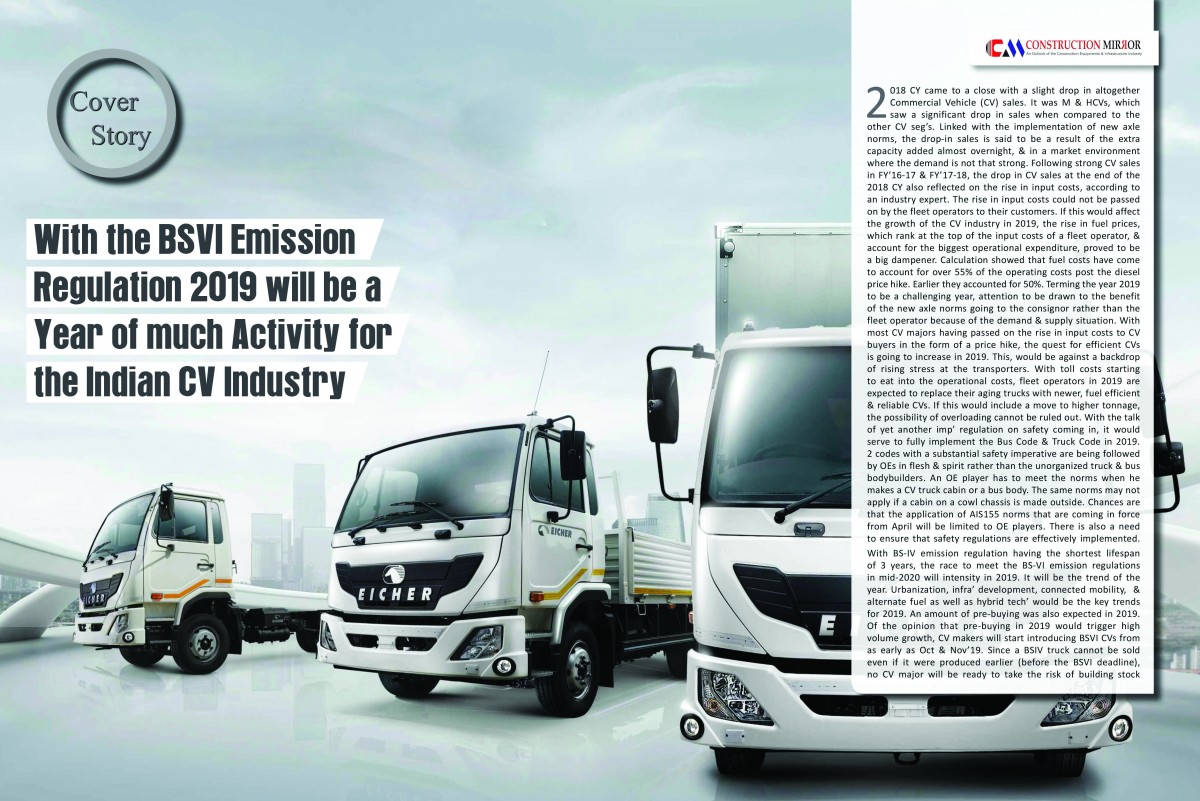

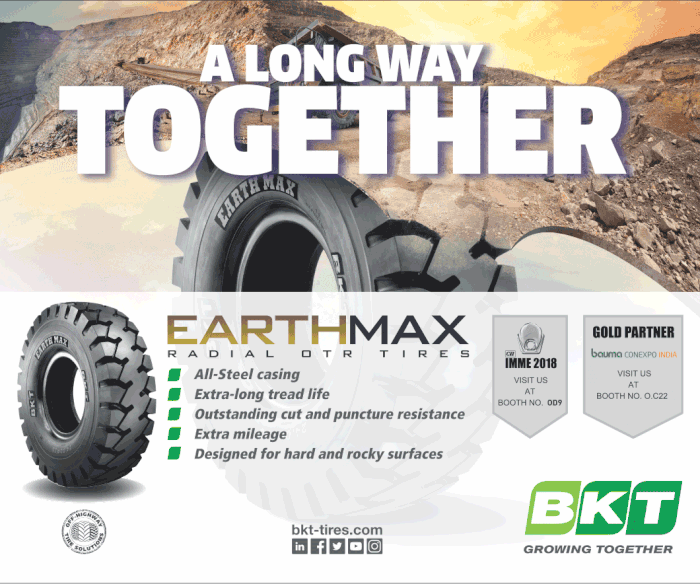
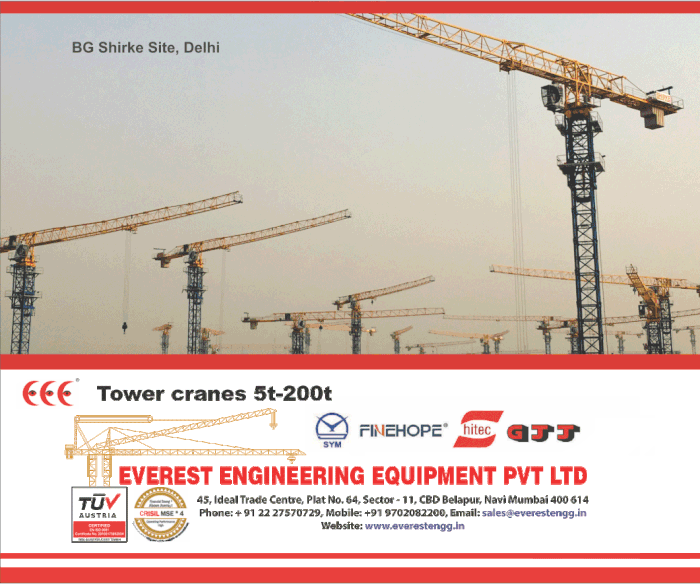
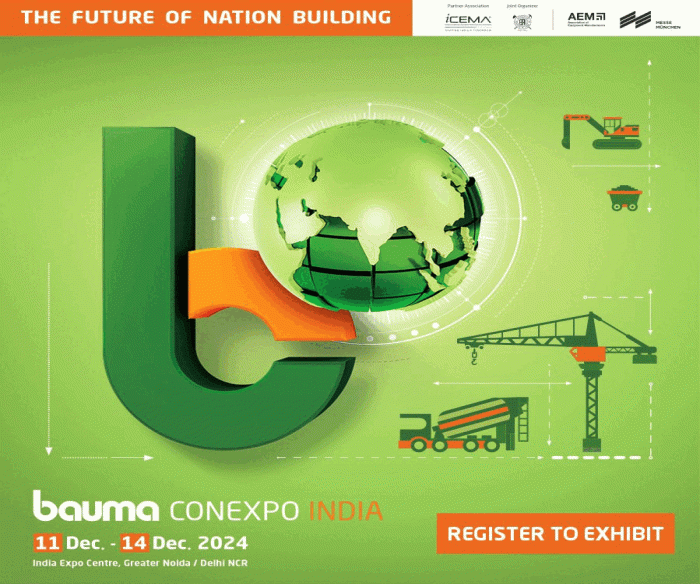
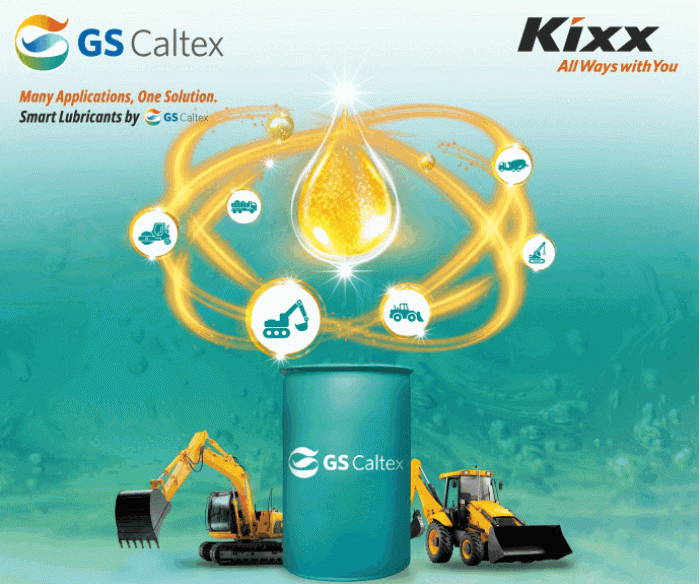
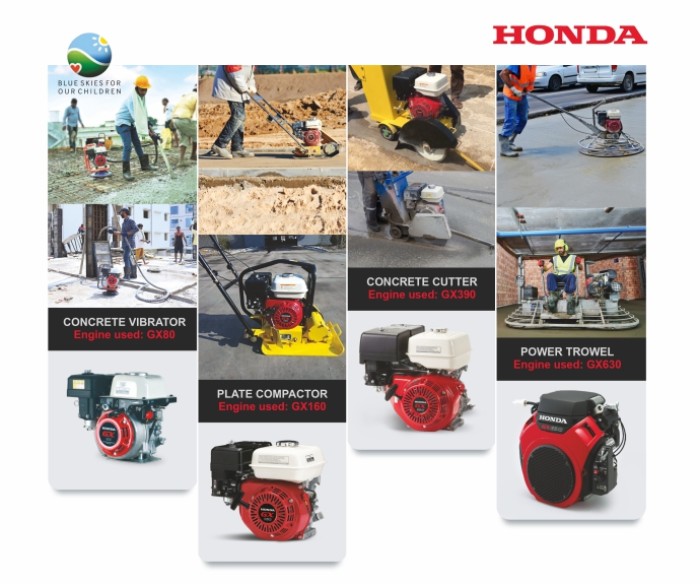
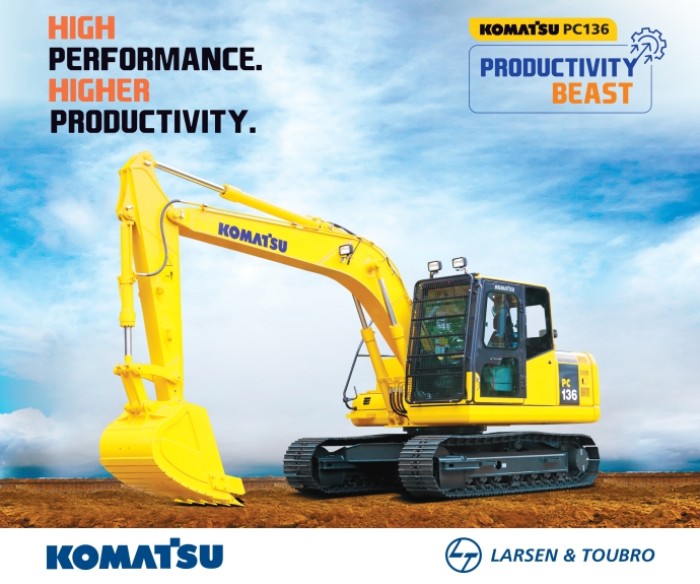
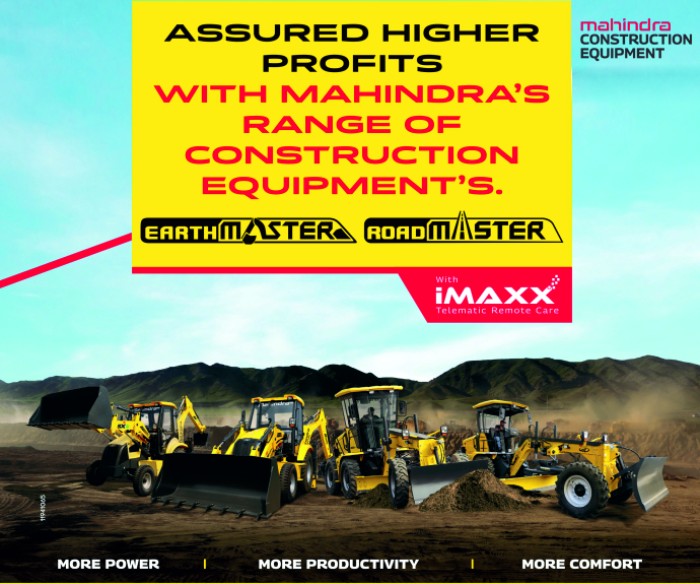
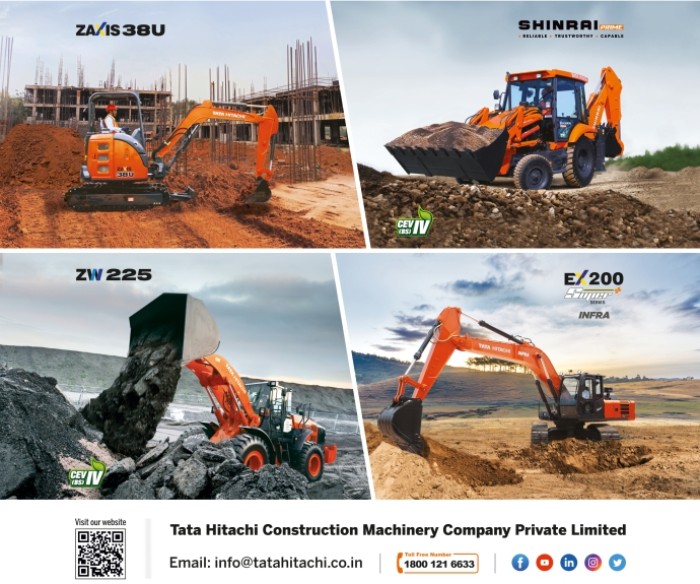



Leave a comment